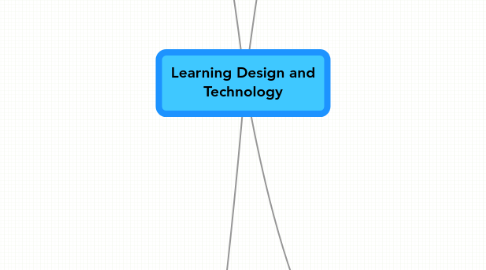
1. Ideas
1.1. Web 2.0
1.1.1. Read-Write Web
1.1.1.1. Wiki
1.1.1.2. Blog
1.1.2. Subscribing to information
1.1.2.1. RSS
1.1.3. Social Spaces
1.1.3.1. YouTube
1.1.3.2. Flickr
1.1.3.3. del.icio.us
1.1.3.4. Napster
1.1.3.5. CiteUlike
1.1.4. Internet as a Platform
1.1.4.1. Google Docs
1.1.5. Open Source
1.1.5.1. Google Maps
1.2. Handheld devices
1.2.1. Issues
1.2.1.1. Devices lack in screen and key size and processing power
1.2.1.2. Mobile devices are a distraction
1.2.1.3. Accessibility and cost barriers
1.2.1.4. Lack of a standardized content delivery platform
1.2.1.5. Mobile content is expensive
1.2.2. Web apps
1.2.2.1. Benefit
1.2.2.1.1. Only mobile web browser is needed
1.2.2.2. Issue
1.2.2.2.1. Internet connectivity
1.2.3. Native apps
1.2.3.1. Benefits
1.2.3.1.1. Simplier
1.2.3.1.2. Faster
1.2.3.2. Issues
1.2.3.2.1. Limited storage
1.2.3.2.2. Technical limitation on different types of platform
1.2.3.2.3. User preferences on different types of platform
1.2.4. Immediacy of information is important
1.2.5. Can use GPS to locate and track places
1.2.6. QR codes
1.2.6.1. Bring learning into the physical world
1.2.6.2. Can link more information about an object
1.2.6.3. Allowing students to connect information or ideas in their native languages
1.3. User Interface desgin
1.3.1. Designer related
1.3.1.1. Consistency
1.3.1.2. Explain the rules
1.3.1.3. Navigation
1.3.1.4. Effective words
1.3.1.5. Understand the widgets
1.3.1.6. Look at other applications
1.3.1.7. Use color appropriately
1.3.1.8. Follow the contrast rule
1.3.1.9. Align fields effectively
1.3.1.10. Justify data appropriately
1.3.1.11. No crowed screen
1.3.1.12. Group things effectively
1.3.2. Stakeholder related
1.3.2.1. Set standards
1.3.2.2. Be prepared to hold the line
1.3.2.3. QA
1.3.3. User related
1.3.3.1. Expect your users to make mistakes
1.3.3.2. Design should be intuitable
1.4. QR Codes
1.4.1. 2-dimensional bar code
1.4.2. Can contain text and url
1.4.3. Use in library
1.4.4. Use is equipment room
1.4.5. Lecture podcast
1.4.6. Data repository
2. Research
2.1. Survey
2.1.1. Handheld devices
2.1.1.1. iPad
2.1.1.1.1. 90% Makes class more interesting
2.1.1.1.2. 79% Encourages exploration of additional topics
2.1.1.1.3. 68% Provide functions/tools not possible with a textbook
2.1.1.1.4. 63% Helps students more effectively manage their time
2.1.1.2. Mobile
2.1.1.2.1. 66% users more likely to ask timely questions
2.1.1.2.2. 81% users expect information immediately
2.1.1.2.3. Smartphone
2.2. Case study
2.2.1. Software applications
2.2.2. Handheld devices
2.2.2.1. Issues
2.2.2.1.1. Small screen
2.2.2.1.2. No keyboard and mouse
2.2.2.1.3. Processing power
2.2.2.1.4. Fee
2.2.2.2. Solutions
2.2.2.2.1. Reduce text
2.2.2.2.2. Land-scape
2.2.2.2.3. Full screen presentation
2.2.2.2.4. Zoom-in
2.2.2.2.5. Avoid scrolling
2.2.2.2.6. Task oriented
2.2.2.2.7. Wireless network
2.2.2.2.8. Audio book could be more effecient
2.2.2.3. Usage
2.2.2.3.1. Capture tool
2.2.2.3.2. Connectivity tool
2.2.2.3.3. Analytical tool
2.2.2.3.4. Representational tool
2.2.2.3.5. Multimedia-access tool
2.2.2.4. Twitter
2.2.2.4.1. Posting tweets helped build confidence in writing Italian
2.2.2.4.2. Made the course more interesting
2.2.2.4.3. Increased motivation in learning Italian
2.2.2.4.4. Improved Italian grammar and vocabulary
2.2.2.4.5. Learn more Italian culture
3. Definition
3.1. Instructional Media
3.1.1. History
3.1.1.1. Magic Lantern
3.1.1.2. Chalkboard
3.1.1.3. Pencil
3.1.1.4. Stereoscope
3.1.1.5. Radio
3.1.1.6. Overhead Projector
3.1.1.7. Language Lab Headset
3.1.1.8. Educational Television
3.1.1.9. Scantron
3.1.1.10. Plato Computer
3.1.1.11. Graphing calculator
3.1.1.12. Interactive Whiteboard
3.1.1.13. Mobile device
3.1.1.14. Handheld device
3.2. Instructional Design
3.2.1. History
3.2.1.1. School Museums
3.2.1.2. Visual instruction and Instructional films
3.2.1.3. Audio Instruction and instructional radio
3.2.1.4. World War 2
3.2.1.4.1. Training films
3.2.1.4.2. Audio devices
3.2.1.4.3. Simulators and training devices
3.2.1.5. Growth of media research
3.2.1.6. Growth of communication theories
3.2.1.7. Instructional TV
3.2.1.8. Growth of computer
3.2.1.9. Mobile device
4. Theory & Framework
4.1. Learning object
4.1.1. handheld devices
4.1.1.1. Functional Framework
4.1.1.1.1. Administration
4.1.1.1.2. Referential
4.1.1.1.3. Interactive
4.1.1.1.4. Microworld
4.1.1.1.5. Collaborative
4.1.1.1.6. Location aware
4.1.1.1.7. Data collection
4.1.1.2. Pedagogical Framework
4.1.1.2.1. Administration
4.1.1.2.2. Referential
4.1.1.2.3. Interactive
4.1.1.2.4. Microworld
4.1.1.2.5. Collaborative
4.1.1.2.6. Location aware
4.1.1.2.7. Data collection
4.1.2. User Interface Design
4.1.2.1. Structure
4.1.2.2. Simplicity
4.1.2.3. Visibility
4.1.2.4. Feedback
4.1.2.5. Tolerance
4.1.2.6. Reuse
4.1.3. Definition
4.1.3.1. Reusable
4.1.3.2. Better be small
4.1.3.3. Identifiable piece of learning can be achieved
4.2. Learning
4.2.1. Internal process
4.2.1.1. Process of Cognitive Learning Theories
4.2.1.2. Stage of change
4.2.1.3. The Satir Change Model
4.2.1.4. Blooms taxonomy
4.2.2. External process
4.2.2.1. The Kolb Model
4.2.2.2. I Opt
4.2.2.3. kotter's 8 steps change model
4.2.2.4. Four stages of competence
4.2.2.5. Connectivism
4.2.2.6. Behaviourism
4.2.2.6.1. Events of Instruction
4.2.2.7. Constructivism
4.2.2.7.1. Conversational model
